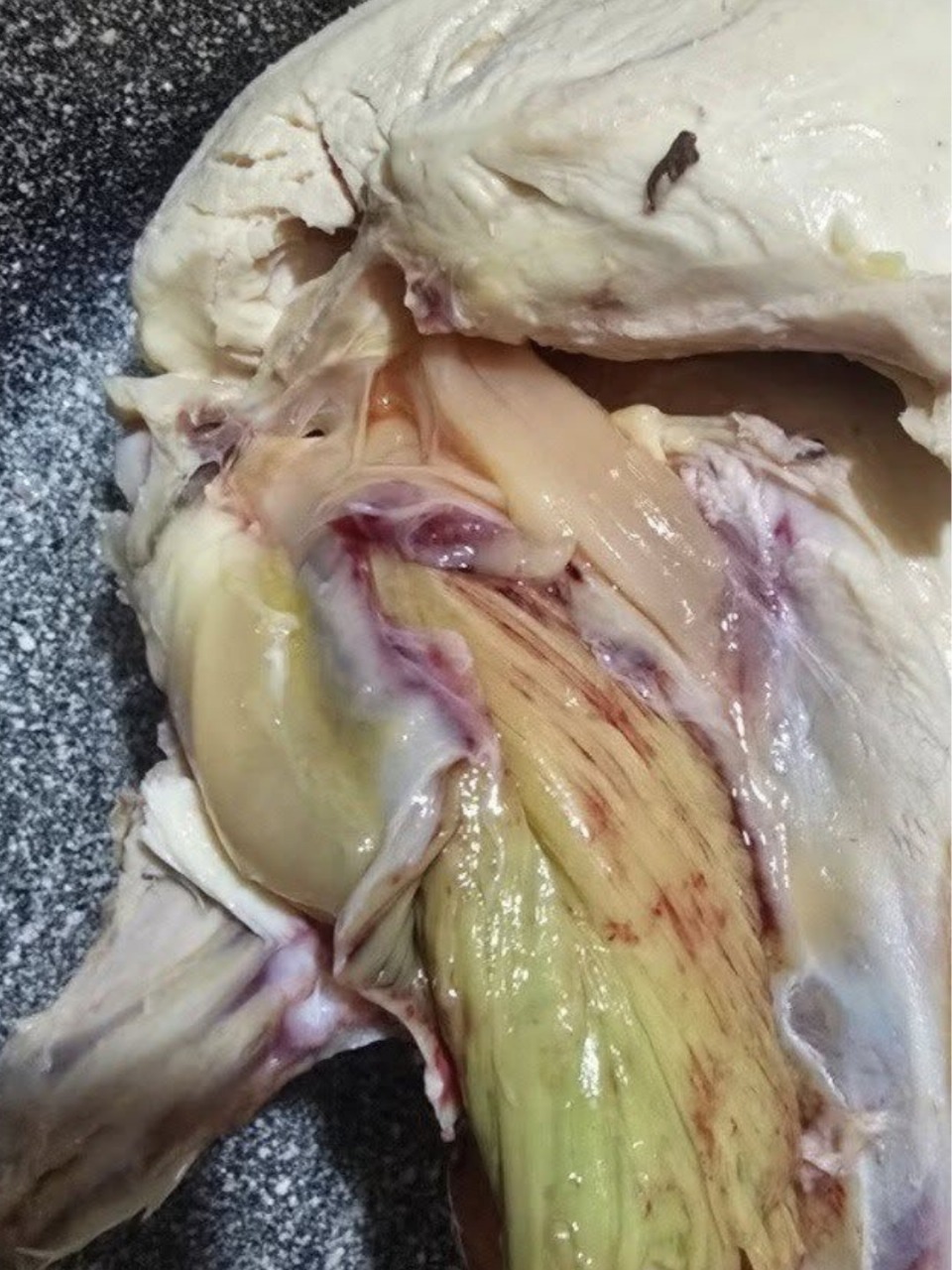This is completely normal and does not mean the meat is spoiled.
Think of it like the rainbow effect on a CD — it’s physics, not contamination.
2. When Green Does Mean Spoilage
While iridescence is usually harmless, true green discoloration — especially if it’s:
Dull, cloudy, or patchy
Accompanied by an off smell
Found under the surface or spreading
…could be a sign of bacterial growth or mold.
Spoiled chicken may turn green due to:
Pseudomonas bacteria – Common in spoiled meat; can produce green pigments
Mold growth – Fuzzy patches in green, blue, or black
Oxidation over time – Especially in improperly stored or very old meat
How to Tell If Green Chicken Is Safe
Use your senses — not just your eyes.
Rainbow/greasy sheen
that shifts with angle
Normal light refraction — safe
Even pink/white meat underneath
Good quality, properly stored
No foul odor
Not spoiled
Sticky, slimy texture
Bacterial growth — discard
Strong sour or ammonia-like smell
Spoiled — do not eat
Fuzzy spots or deep green patches
Mold — throw it out
Rule of thumb: If it smells bad or feels slimy — toss it, regardless of color.
Why Frozen or Deli Chicken Shows This More Often
Frozen chicken: Ice crystals can damage muscle fibers, increasing surface irregularities that reflect light oddly when thawed.
Deli-sliced chicken: Thin cuts expose more uniform fiber patterns — perfect for iridescence.
Processed chicken (like roasted or seasoned): Additives and moisture retention can enhance the optical effect.
SEE NEXT PAGE
ADVERTISEMENT

